
Amidst a global rise in news avoidance, an increasing number of journalists and researchers map its implications and underlying causes. As a response, a number of strategies are being proposed to re-engage with audiences and reaffirm the value of professional journalism.
The global increase in news avoidance is causing concern among journalists and media researchers alike. To understand the phenomenon, it is important to distinguish between selective and consistent news avoidance, as each has its own reasons and consequences. Selective avoidance, often attributed to news fatigue and information overload, involves steering clear of specific topics or sources rather than entirely shunning the news. Consistent news avoidance is more concerning, indicating minimal engagement with news in general.
According to the 2023 Digital News Report by Reuters Institute, financed by Google, the proportion of those who avoid news, either consistently or occasionally, is close to all-time highs of 36% across various markets. Selective news avoiders follow various strategies, including avoiding news on certain channels such as the radio or social media, as well as more specific actions like reducing news checking frequency or avoiding certain topics like the conflict in Ukraine or national politics.
Benjamin Toff, assistant professor at the Hubbard School of Journalism & Mass Communication at the University of Minnesota, points out that there is less data on consistent news avoidance, which is a particularly concerning trend in countries like the UK and US where it has risen to 7%. “In anti-democratic countries there is also a correlation between lower press freedom and higher news avoidance, because news is perceived as less reliable and less trustworthy,” Toff said, adding that data about the phenomenon in highly autocratic countries are scarce.
There are various reasons behind the increase of news avoidance. Toff explained that selective news avoidance is a response to information overload and the complexities of today’s media landscape, reflecting a general disengagement from news. This phenomenon is closely intertwined with digital infrastructure and with people’s identities and ideological beliefs, shaping their perception of the world.
In a survey conducted in the Netherlands, researchers identified seven distinct profiles of news avoiders, each with its own set of characteristics and motivations. These profiles range from those who occasionally avoid news due to concerns about its quality or its negative impact on their emotions to those who prefer alternative media sources. Among these profiles are also those who feel indifferent towards news, or find it challenging to engage with. Additionally, there are those who hold negative sentiments toward news, often driven by political ideologies.
News avoidance is more prevalent among younger generations, Toff said, as well as among women and those with lower levels of education and socioeconomic status. There is no specific data linking the growing popularity of TikTok to the increasing tendency of younger audiences to access news through the platform, a trend that suggests a weakening connection to traditional news brands. Yet, there is a perception among these audiences that traditional news habits are outdated and a belief that news will naturally come to them.
News avoidance can have serious societal consequences. Toff noted a strong correlation between political engagement and news consumption. “Political coverage often requires a significant level of background knowledge, it is like tuning in to Episode 3 in Season 4 of Game of Thrones, without knowing what happened in the show before,” he said. Since news avoidance is particularly prevalent among disadvantaged groups in the society, it poses a risk of widening existing inequalities by further skewing mainstream journalism towards privileged audiences.
As publishers have recognised the urgency of the issue, many started to devise strategies to address it. Researchers have also proposed several research-backed steps that journalists and editors can take to effectively counteract news avoidance.
One crucial aspect involves responding to how news makes people feel emotionally, Toff said. News organisations should acknowledge common complaints about news being depressing, irrelevant, or overwhelming. By presenting uplifting, relevant, and accessible content that resonates with people’s lives, they may attract audiences who previously avoided news products. Additionally, efforts to engage news avoiders should prioritise representing and respecting diverse groups, fostering a sense of inclusion and relevance.
To make news more accessible for consistent avoiders, simplifying news content and formats is essential. Offering summary pieces, providing background and context for stories, and personalising news delivery based on individual interests and levels of background knowledge can help engage audiences who may feel overwhelmed by traditional news formats.
Furthermore, educating the public about the value of journalism and promoting innovative news formats are also important steps in countering news avoidance. Actively listening to audience feedback is a key component of successful engagement strategies.
Ultimately, countering news avoidance requires an all-purpose approach involving news organisations, especially public service media, non-profits, and even civic organisations and universities that can offer media literacy training, according to Toff. By making news content more visible and relevant to everyday life, reaching audiences on their preferred platforms and in preferred formats, and emphasising the social benefits of news consumption, publishers can attempt to re-engage audiences and reaffirm the importance of professional journalism.

Robert Brestan, Editor-in-Chief of HlidaciPes.org explains why independent news organisations need donor funding, and shares insights about how grantees think about such projects.
Let’s not kid ourselves. Quality, responsible and independent journalism cannot be done without money. The fact that a journalist is well (i.e. adequately) paid also determines the degree of his or her self-confidence, assertiveness and control vis-à-vis the powerful and often the rich.
This is just to begin with, to clarify our positions. Money is simply crucial, and it is impossible not to see that the crisis of media funding is being addressed practically all over the world. Advertising is declining, readers have gotten used to not paying for content, they often make do with just “information” from social media, or they don’t really want to bother with news anymore.
But what to do about it then? In our project HlidaciPes.org, a Czech independent analytical-investigative website, we decided that we don’t want to go the way of the paywall. Although for some media it is a legitimate and functional way, we feel that writing for a narrow circle of subscribers only, persuading the already convinced and addressing only like-minded people is not the right journalistic approach.
Nevertheless, internet advertising generates only a small income for a medium of our size, just like direct support, such as voluntary donations, from readers, however much we appreciate it. That leaves only two relevant sources of income: the first is a generous and enlightened donor and philanthropist who ideally supports the medium selflessly and asks for nothing in return, let alone has any say in its content. Fortunately, such an endangered species still exists, even if it is on the verge of extinction. I am pleased to say that our project has one such supporter, covering about a third of our annual budget.
And then there are various grants. I dare to say that their importance is growing, and without them many media would have disappeared. I am therefore pleased to be able to describe and explain one thought here: many grants to support journalism actually make practical life in newsrooms quite complicated. It may sound strange, but it is true. Topics just for grants are invented, editorial offices guess whether the evaluator will be interested in this or that story, they try to fit within the boundaries of the grant, and often end up spending time on something they didn’t really want to write about.
And then there are all those beautiful, and certainly well-intentioned, ideas of grant providers that the best thing about journalism is sharing experiences, organising various conferences, talks, and cross-border cooperation – it sounds quite nice, but believe me, it has little to do with real journalism. It takes away human, mental, and financial capacities and time from real work. It may be fine, but it’s just something extra – after the basic needs have been met.
What journalists of independent media really and acutely need is simply money to operate. In our case, for example, that means only one thing – money dedicated to a regular income for our writers and contributors to do what they do best: come up with original topics and write about important issues.
So if the grants are really to be precisely targeted and to support journalists and journalism, they should be grants for the day-to-day journalistic work: researching topics, verifying information, meeting the actors of important events, investigating and then writing articles, interviews, reports, analyses, etc.
If you want to support journalism – and if you do, we appreciate it immensely – you can help it most by simplifying things along the lines of the following:
- We (the donors) see/we know/we’ve verified that you’re doing honest and responsible journalistic work, and you meet the other conditions.
- Tell us which topics you cover/want to cover, maybe even through international cooperation.
- If you meet our criteria, we will send you money – not for sandwiches and coffee, not for conferences, not for sharing experiences, but for work.
If all grants looked like this, life would be much better. But not just for journalists. Everyone who understands the importance of independent media in a democratic and free society would be better off.
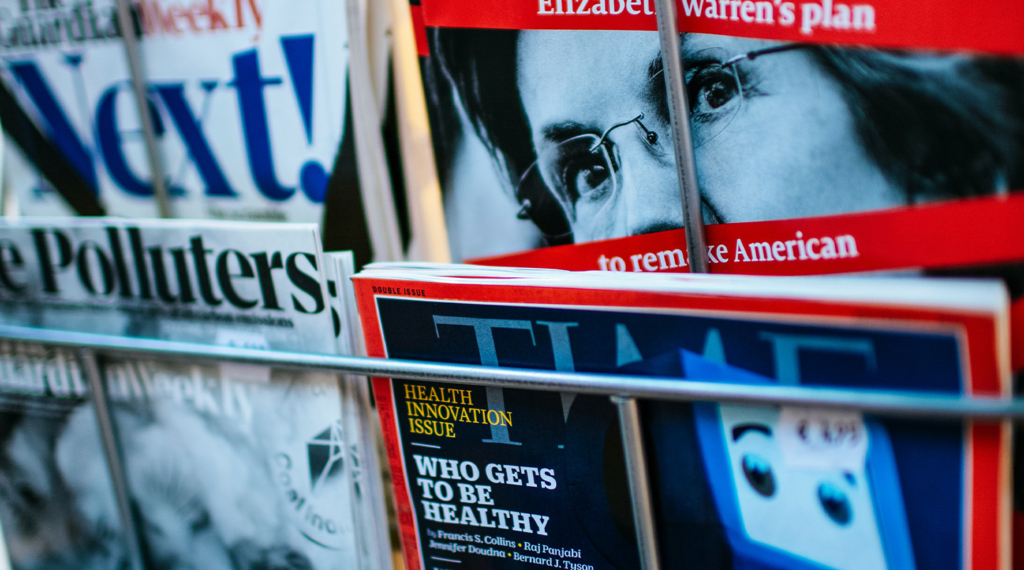
In an era where the value of journalism is increasingly scrutinised, understanding its impact presents a complex puzzle. From traditional metrics to innovative methodologies, the quest to measure impact evolves, with new tools emerging.
Both journalists and donors recognise that the media operates within a larger ecosystem, making it difficult to isolate and measure the precise impact of journalism. Furthermore, impact can vary significantly depending on the goals and priorities of different journalists and newsrooms. For instance, while one news organisation might prioritise educating its audience and measure impact by assessing changes in public opinion on contentious issues, other outlets may focus on different indicators.
Still, journalists and media organisations worldwide are engaged in assessing the impact of their work, driven by a dual motivation of self-evaluation and the need to demonstrate value to donors, investors, and the public. Increasingly, media outlets recognise that communicating the positive outcomes of their work not only boosts trust and loyalty among audiences but also holds potential for revenue growth.
This shift reflects a common belief among funders that investing in journalism requires tangible evidence of impact, moving beyond viewing it solely as a public good. Such recognition underscores the need for donors to evaluate their investments in media and journalism programmes thoroughly.
Insights into measuring impact, such as those outlined by the International Journalists’ Network, highlight its multifaceted nature, encompassing not only the dissemination of information but also its broader societal effects. From shaping public opinion and encouraging public discourse to driving policy change, the impact of journalism spans various phases, often defying simple cost-benefit analyses. Moreover, methodologies for measuring impact extend beyond traditional metrics like online engagement, with a broad range of tools developed by academics. Add to that cross-border collaborations, or even negative consequences, such as potential backlash against journalists.
To analyse impact, there are a lot of different studies across various fields like economics and political science, focusing on topics from government spending and corruption to voter behaviour, argues Anya Schiffrin, director of the media, technology, and communications specialisation at Columbia University’s School of International and Public Affairs (SIPA), adding that these “measurement tools are becoming more and more sophisticated.”
The Impact Dashboard, developed by Pluralis in collaboration with the Media and Journalism Research Center (MJRC), is one of such tools. It evaluates supported media organisations across three key dimensions: long-term sustainability, plurality, and accessibility to information, analysing impact on three levels. On the micro level, it tracks how supported organisations change in terms of revenues and audience reach over the course of working with the funder. On the meso level, the Dashboard collects evidence to measure the level of media plurality in the country. Finally, on the macro level, it examines the impact on society, searching for evidence such as potential policy changes resulting from coverage by the media receiving the grant.
Another approach is proposed by Schiffrin, who, with Andre Correa d’Almeida, Lindsay Green-Barber, Adelina Yankova, and Dylan W. Groves developed a multi-faceted metric system to analyse media impact. As they argue, three primary research strands contribute to understanding media impact: social scientists focus on identifying causal effects, often related to citizen knowledge, attitudes, and government responses; media researchers offer accounts of causal processes and diverse media effects; and media practitioners provide an insider’s view, highlighting the impact on journalists and media organisations. These approaches can complement each other, hence their proposed taxonomy that can unify measures of media impact, and inform decisions by practitioners and donors.
The taxonomy comprises three levels of impact. At the individual level, media reports influence beliefs, attitudes, and behaviours. The network/organisation level involves the collective impact on social networks, norms, and actions, including effects within media organisations and journalist communities. The institution level pertains to long-term effects on institutions and culture. The taxonomy also distinguishes between external impact on society and internal impact within the journalism community, providing a framework that can be adapted to different objectives, acknowledging the diverse goals of donors, activists, journalists, and media outlets. “One can look at the table and then measure those metrics their organisation cares about,” Schiffrin said.
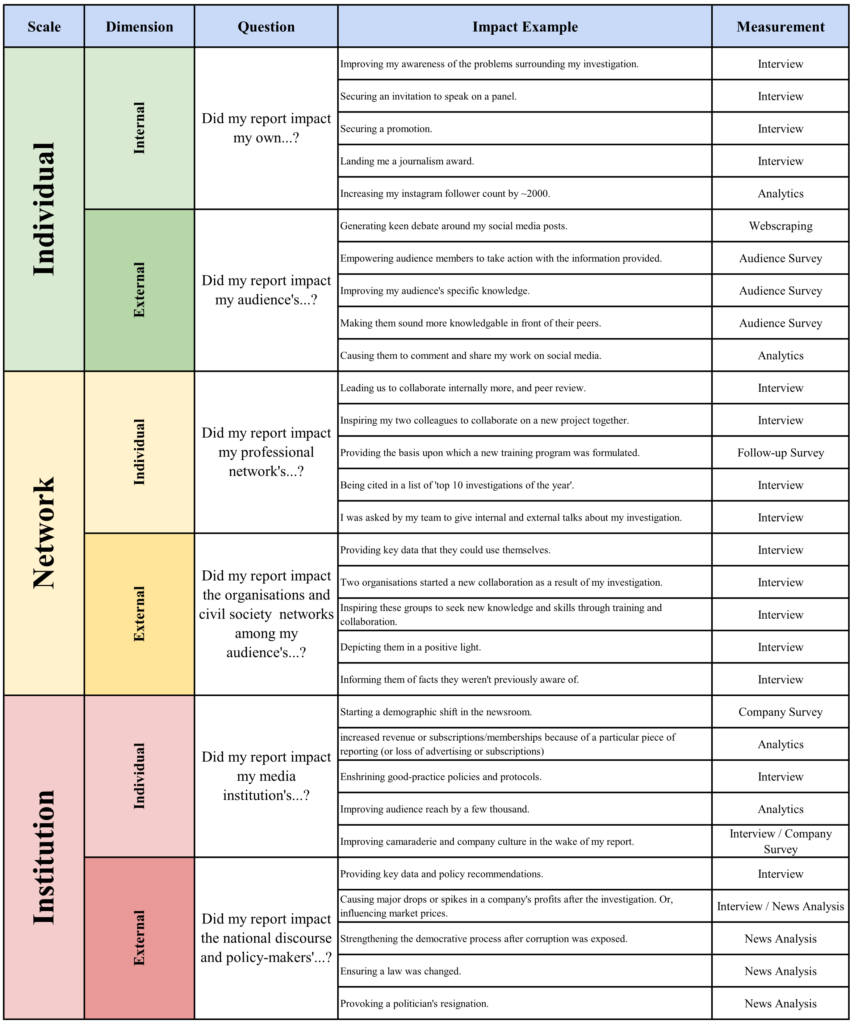
In evaluating the impact of journalism, it is important to recognise that some news organisations have smaller audiences rendering metrics like pageviews or listenership alone inadequate. Furthermore, while one traditional measure of journalism’s impact involves influencing government policy or prompting officials to address issues, achieving such outcomes often demands sustained reporting over an extended period.
Furthermore, in countries with more autocratic rulers and intensified attacks on journalism, government responses to policy concerns or official misconduct exposed by investigative reporting cannot be expected. In fact, in such landscapes if donor funding contributes to the survival of a news organisation, it can already be perceived as having a significant impact. “It is important to keep the flame alive,” Schiffrin said. “You don’t want these outlets to die.” She added that, when measuring impact, journalism donors should avoid burdening grantees with overly demanding reporting requirements, focusing instead on listening to their feedback.
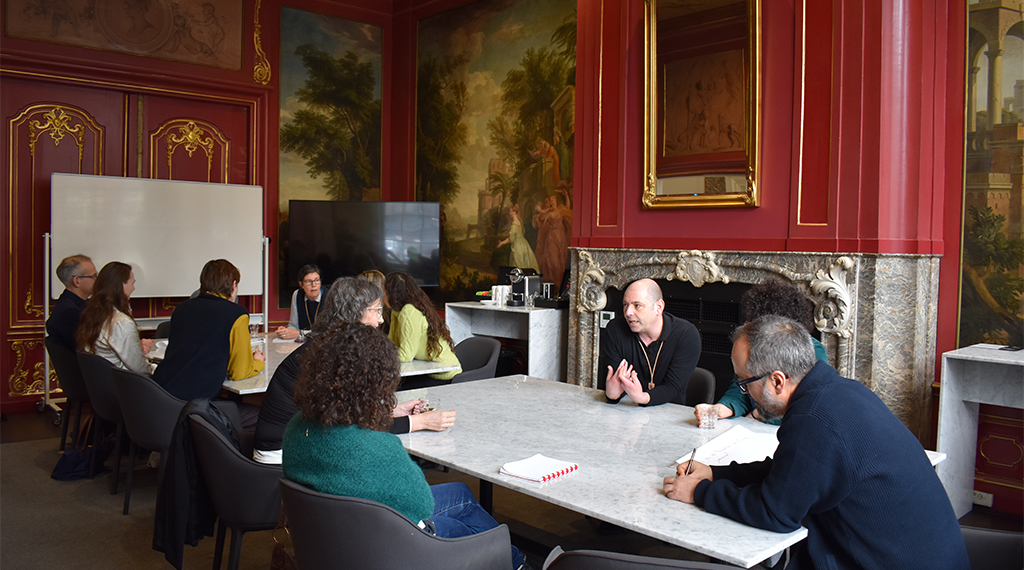
In a world where the pillars of democracy face unprecedented challenges, the relationship between philanthropy and journalism is mutually beneficial. While independent media grapples with daunting challenges and crises, the decision to fund journalism emerges not merely as an act of altruism but as an indispensable strategic imperative, wielding profound influence in shaping societal narratives and driving transformative change.
The significance of journalism often gets overshadowed by the buzz of social media, flashy headlines, and the discussions on misinformation. Yet, on 15 March, at the annual conference of the Journalism Funders Forum, where funders can engage in an interactive and proactive manner, representatives from the philanthropic world gathered in Amsterdam to discuss why independent media and philanthropies mutually need each other, how journalism strengthens the impact of philanthropies, and the importance of new players entering the journalism funding field.
Journalism as a Tool for Societal Objectives
Quality journalism and media organisations face numerous substantial challenges. Media capture, where media are controlled by governments and/or non-state groups with vested interests, the general decline in trust in the media, and the rise of social media platforms are just a few examples. Additionally, the media industry has struggled to recover from the 2008/09 financial crisis as its traditional business model crumbled. While there is a continuous rise in global advertising expenditure, a significant portion of it is monopolised by tech behemoths, therefore, the biggest challenge lies in financial sustainability – maintaining operations without relying excessively on external funding sources – highlighting the need for journalism grants. As Jonathan Heawood, Executive Director, the Public Interest News Foundation argued, “80 percent of the headspace of brilliant journalists is taken away by worrying about bills.”
This stark reality underscores the critical need for more funders, especially new players in the field, to step forward and support journalism. However, convincing potential funders has proven to be a daunting task, as many of them carry a prevailing reluctance to invest in media, often perceived as a failing enterprise. Moreover, journalists themselves may not always be the most effective advocates for their own cause. Compounding these challenges is the general erosion of trust in traditional media, fuelled by the proliferation of mis- and disinformation. Despite these hurdles, the imperative to fund journalism remains clear.
For philanthropy seeking to champion press freedom, the rationale for funding journalism is self-evident. However, even for those with different philanthropic goals, investing in journalism can serve as a powerful means to achieve broader societal objectives. This might prompt potential funders to consider thematic funding, involving grants for reporting on specific topics such as social justice, healthcare, or environmental concerns.
As Jonathan Heawood argued, while this approach may lead to some immediate or medium-term improvements, achieving long-term impact necessitates considering the sustainability of journalism. He urged a deeper understanding of the underlying ecosystem. Just as biological ecosystems require productivity, resilience, and organisation, the information ecosystem must also be nurtured to yield the desired outcome: democracy. Adrian Arena, Director of International Human Rights, the Oak Foundation, echoed this sentiment, emphasising that at its core, the endeavour to fund journalism is fundamentally about safeguarding democracy.
Harnessing the Power of Journalism
However, selling the concept of democracy as a noble cause has become increasingly challenging. Democratic rights are under attack by populist movements and authoritarian governments across various regions. Programs promoting such rights often result in backlash, leading to the stigmatisation of involved organisations. For instance, many countries employ narratives that label such organisations as foreign agents meddling in sovereignty, with civil society organisations and independent media being vilified as adversaries and frequently subjected to smear campaigns. Consequently, for some philanthropies, the perceived risks associated with supporting democracy, human rights, or journalism in certain regions may deter their involvement.
Still, regardless their focus, it is imperative for every philanthropy to engage the public, creating critical pressure and fostering long-term results. Public outreach and storytelling are indispensable elements of every successful program, which underscores the critical role of journalists in defining narratives. As a conference participant argued, to achieve systemic changes, decision-makers need to feel responsible and inspired to act, and a powerful driving force behind this is evidence-based, balanced and solutions-driven narratives driven by independent journalism.
The power of influencing hearts and minds cannot be overstated, and media serves as a very potent avenue for achieving this goal. Failure to harness the potential of journalism means missing out on a significant opportunity for outreach and impact. Furthermore, even a relatively modest investment in journalism funding can yield substantial results, making a meaningful impact on society.
Speaking of impact, Miguel Castro, Head of Global Media Partnerships, the Bill and Melinda Gates Foundation, emphasised the critical importance of demonstrating impact to convince potential funders, highlighting its dual role as also a tool for media outlets to attract subscribers by showcasing the value of their journalistic product.
However, measuring the impact of journalism funding projects presents challenges due to the difficulty in establishing causal relationships between positive impact and journalists’ publications, given journalism’s multifaceted nature which encompasses informing the public, shaping opinion, fostering accountability, and influencing policy, with these effects often being indirect and hard to quantify. Fortunately, various metrics, such as public revelations, can be utilised, with journalism funding projects proving relatively easy to monitor due to their daily publication cycle, facilitating continuous monitoring.
The ultimate impact of journalism funding, however, extends beyond mere metrics, encompassing discourse shifts and policy changes. The unique ability of journalism to elevate issues onto the agenda creates fertile ground for tangible policy transformations.
Navigating Challenges and Strategies for Effective Funding
Navigating the landscape of journalism funding requires a strategic approach, but, as a participant emphasised, it is not as daunting as it may seem, and it works similarly to other fields. Prospective funders must clarify their objectives from the outset. It is paramount to collaborate with local consultants and partners possessing in-depth knowledge of the media landscape and organisations, whether they are trustworthy and produce quality journalism. Due diligence is also important, particularly in regions with high levels of media capture and limited press freedom.
Engaging with other funders fosters mutual learning and advocacy efforts. Coordination among funders is essential not only to prevent unnecessary overlaps but also to share experiences and insights. Additionally, coordination can extend beyond information sharing: pooled funds offer an alternative entry point, facilitating more significant capital involvement and expertise aggregation. Adrian Arena highlighted their benefits, including expanded geographic reach and collective peer strength in managing potentially sensitive programming.
Journalists’ sensitivity to editorial independence is paramount, necessitating programs built on mutual trust and respect for the autonomy of news organisations. While financial support is crucial, capacity building can be equally vital for sustainability, encompassing legal counselling and assistance with SLAPPs (Strategic Lawsuits Against Public Participation), brought by individuals and entities to deter their critics from continuing to produce negative publicity. In certain cases, even psychological support can be valuable. In conclusion, while funding journalism might seem daunting, it presents an opportunity also for new players and thematic funders to make a significant impact. The Journalism Funders Forum stands as an entry point for funders new to the field, providing a space for European philanthropies to engage proactively in supporting independent, quality journalism and its role in democracy, harnessing its power to shape narratives, drive systemic change, and foster accountability.
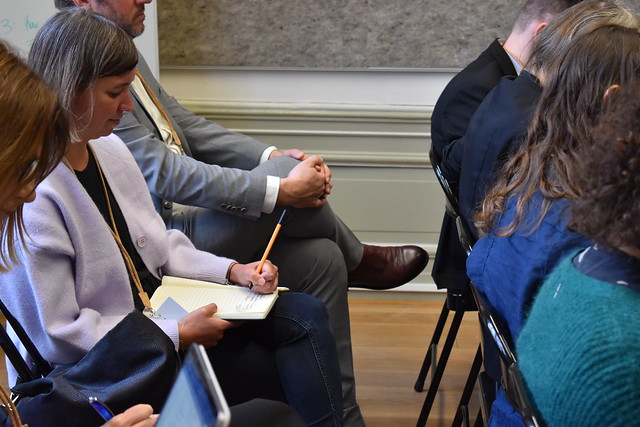
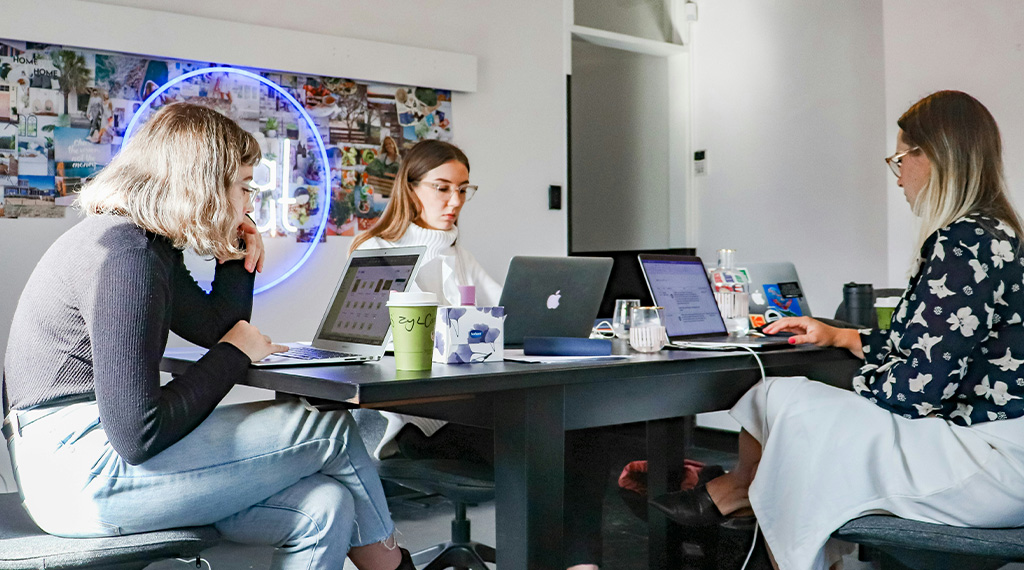
The landscape of local journalism is undergoing a critical transformation marked by dwindling revenues, job cuts, and closures, primarily attributed to the digitisation of information environments. This shift prompts a crucial question: How can local media outlets adapt to the digital era to retain or regain audiences and, consequently, attract advertisers? This study, conducted in Denmark by Lene Heiselberg and David Nicolas Hopmann (Centre for Journalism at the Department of Political Science and Public Management, University of Southern Denmark), employs a mixed-methods audience research approach to unravel the desires and needs of local journalism audiences, exploring functional, symbolic, emotional, and economic values.
Local journalism, vital for community cohesion, faces a challenging cycle where declining resources lead to lower-quality content, further driving audiences away and diminishing revenues. The 21st century, characterised by the dominance of the Internet and social media, poses unprecedented challenges to traditional local media, contributing to the rise of ‘news deserts,’ areas devoid of continuous journalistic coverage. This decline threatens democratic systems, accountability, and crucial local information.
The study distinguishes three audience categories: non-paying, potential-paying, and paying. While all prioritise informative content, paying audiences emphasise symbolic and emotional values, seeking a sense of belonging and personally meaningful content. Non-paying audiences stress the need for improved quality.
Quantitative analysis reveals that 61% of participants are unwilling to pay for local journalism, while 28% are potentially willing, and 11% are already paying. Surprisingly, the perceived relevance of being informed about local affairs is high across all groups, challenging the notion that non-paying audiences don’t value local news. Participants who do not want to pay for local news do not express wants and needs for symbolic and emotional values of local journalism to the same degree as participants who (might) pay for local journalism. Instead, participants who do not pay and participants who might pay emphasise functional values.
The results of the research conducted for this study indicate three paths for local media outlets to increase their audiences: (1) communicate and/or clarify the symbolic and emotional values of local journalism, (2) increase quality regarding the functional values of local journalism, and (3) increase relevance regarding the functional values of local journalism.
Few quotes touch upon the economic value of local journalism, with business owners recognising the relevance of staying informed about local events for economic gain. The study suggests that revitalising local journalism requires prioritising unique, emotionally engaging content, clarifying symbolic values, and enhancing functional quality. Understanding audience preferences is crucial for local media outlets to refine their strategies and to ensure the survival and relevance of local journalism in the digital age.
Heiselberg, L., & Hopmann, D. N. (2024). Local journalism and its audience. Journalism, 0(0).
https://doi.org/10.1177/14648849231173226

The Ethical Media Alliance (EMA) in Romania aims to tackle quantitative metrics: the main flaw of the digital advertising ecosystem that undermines public interest journalism. The initiative aims to allocate funds based on ethical principles to support trustworthy media in achieving a positive social impact and financial sustainability, while also securing brand safety for advertisers.
In the age of web 2.0, the advertising market disproportionally incentivises clickbait content. The quest for the higher reach at the lowest cost has led to an emphasis on viral content, often at the expense of responsible, public interest journalism. However, amidst this challenging landscape, initiatives like the Ethical Media Alliance (EMA) in Romania are emerging as beacons of hope for independent media organisations, especially those dedicated to public interest journalism.
The initiative was born as a “result of frustration over how much money is funnelled to irresponsible content producers,” says Dragos Stanca, EMA’s initiator. He thinks that there is a critical flaw in the digital advertising ecosystem, where the focus on quantitative metrics such as clicks and impressions undermines the value of public interest journalism. This has led even serious publishers to embrace clickbait content to survive in the era of programmatic advertising.
In the first phase of the project, EMA positions itself as a not-for-profit sales house guided by ethical principles, involving journalistic startups and projects often excluded from commercial funding due to their relatively modest audience numbers. Stanca acknowledges the necessity of speaking the language of the advertisers, thereby integrating metrics and key performance indicators (KPIs) into their approach. Additionally, EMA aims to foster a positive social impact by supporting content essential for democracy.
The network currently includes 15 journalistic projects employing over 120 journalists, with a joint monthly reach of 1.2 million users and 550,000 video views on average. Advertisers are required to commit to a minimum one-month campaign that spans across all portals. In other words, the same ad is on display on all the sites thus increasing its reach to a level that, as Stanca puts it, “makes sense for a media buyer.” EMA ensures brand safety by allowing only organisations producing public interest content to join. This guarantees advertisers that their ads will be associated with responsible content.
Furthermore, EMA also reforms the distribution of ad revenue in the network. Half of it is distributed among partners based on the number of employed journalists, while the other half is based on quantitative metrics (35% based on the number of ad impressions and 15% on social media reach). This follows the usual ‘cost per mille’ (CPM) approach, which is the cost an advertiser pays for one thousand views or impressions of an advertisement.
The initiative sets an ambitious target: diverting 1% of the total ad spending in Romania to public interest journalism. In Romania, where the total ad market is €700m a year, with only €30-35m spent online by local companies (out of a total digital ad spending of €255m), the EMA initiative has the potential to double the funds allocated to digital journalism. Currently, no more than €3.5-5 million a year is allocated to digital journalism, according to the initiators of the Ethical Media Alliance.
Stanca believes that shifting even relatively smaller amounts to trustworthy media could significantly enhance their financial sustainability. Particularly for emerging journalistic startups, even a few thousand euros per month can make a significant difference.
Early successes are evident, with the initiative launching last fall and the first campaigns commencing in October. The two largest banks in Romania have joined to date, contributing €35,000 for the first two months as a test campaign.
“Drawing from our experience in the commercial digital brokerage market, I can confidently say that anything that is new takes up to one year to become adopted by the market,” says Stanca, adding that he aims for an ad spending of €100,000 per month by the end of the year.
Recently, he outlined the operating principles of the alliance and presented what his team considers to be an initial format for ethical advertising in a dialogue hosted by independent journalist Petrisor Obae, who operates the media-focused portal Pagina de Media. The principles the EMA operates on aim to create an “ethical algorithm” to be used for the allocation of funds from the ad space. The principles the EMA operates on aim to create an “ethical algorithm” to be used for the allocation of funds from the ad space. The primary goal is to provide enough resources to motivate especially young people to choose a career in journalism, according to Stanca. Moreover, the EMA wants to motivate them to produce content in and for the public interest, “not just to focus on gaining the programmatic advertising revenues or, more seriously, to exclusively serve the interests of media owners with questionable agendas or to write solely for and about brands that are essentially seeking disguised advertising,” Stanca added. “The Ethical Media sales house part is just the first phase of the project; we plan to propose additional initiatives that support an ecosystem which, in our opinion, is essential for the survival of democracy,” he said.
While the initiative is currently confined to Romania, Stanca is open to expansion. As EMA pioneers ethical advertising to support public interest journalism, it could have an impact far beyond national boundaries, ushering in a new era for responsible media funding.

The platform Journalift, the first to offer media development support in local languages in the Western Balkans, was launched as part of a three-year program. Despite the conclusion of the project, it continues to thrive independently. Offering free courses and a wealth of information to fortify the impact of media development in the region, Journalift has taken on a life of its own.
In the ever-evolving landscape of media development, projects often conclude with the end of their funding and implementation period. However, some elements of these initiatives take on a life of their own, continuing to thrive and make a lasting impact. One of the most prominent examples is Journalift, a digital platform born out of the ‘Media for All’ programme, jointly implemented by the British Council, the Balkan Investigative Reporting Network (BIRN), Intrac, and Thomson Foundation, and funded by the UK Foreign, Commonwealth & Development Office (FCDO).
The primary goal of the ‘Media for All’ programme was to bolster smaller media organisations in the Western Balkans, supporting them in developing feasible and innovative business plans. Thomson Foundation played a key role by providing grants, capacity building, business support, and dedicated mentoring, recognising that mentorship is key to achieving successful results.
One tangible outcome of this programme was the creation of Journalift, a multilingual platform launched in May 2021. While the ‘Media for All’ programme concluded last year, Journalift has continued to flourish. “It has a life of its own now,” says Sanja Lazic, the platform’s Managing Editor, and Thomson Foundation’s Communications and Outreach Coordinator for programs in Central and South East Europe.
What sets Journalift apart is its commitment to breaking language barriers. Many media workers in news outlets in the Western Balkans face challenges accessing training and upgrading their skills due to language constraints, as these trainings are often offered only in English. Journalift addressed this by providing up-to-date news and valuable content in all local languages, making it the first platform of its kind in the region.
Even though new content on the platform is mostly available in English only, the target audience is wider after the end of the ‘Media for All’ programme. Now, Journalift is not exclusive to former programme grantees; it serves as a free resource platform for anyone interested in media development. The resources are tailor-made particularly for the Western Balkans and Central Europe; however, audiences from other regions also find it useful.
The platform offers a variety of written content collected through various types of activities related to media development. For example, a small media organisation in rural Serbia can share its experience and the most important lessons learned in a capacity-building programme in which it worked with the help of a mentor on business ideas. This makes it useful not only for other outlets in a similar situation but also for funders who may gain ideas about which approaches work best in the region.
“The idea is to have tailor-made content, but also to give tips, tricks and advice to all media that can implement it,” Lazic says.
The platform also offers free training, including e-learning courses covering a wide range of topics from safety to podcasting. Some courses are available in local languages as well. Additionally, webinars are organised through the platform.
With a monthly visitor count of around 8,000, Journalift has become a vital hub for media professionals. It stands out as a unique and indispensable resource, demonstrating that even after the conclusion of a project, certain elements can transcend their initial purpose and continue to shape the landscape they were created to serve.

Recognising the challenges faced by news media, Civitates offers core funding with flexibility for two years in an attempt to address the funding gap that many media outlets in Europe are grappling with. Prioritising organisational development and sustainability, Civitates’ support has been thus far deployed to media outlets across eight European countries.
Democracy is under attack in various European countries as the space for civil society diminishes, with governments imposing barriers, vilifying groups, and impeding access to crucial funding. The digital public sphere, essential for democracy, is threatened by disinformation and a decline in media trust, fuelled by technological changes.
Enter Civitates, a pooled fund comprising 18 foundations, aimed at beefing up the civil society sector. Initially concentrating on countries witnessing democratic erosion, the initiative swiftly recognised the main role of media capture in this phenomenon, which included frequent attacks against civic space, democracy and the rule of law.
Independent journalism faces a triple threat of diminishing public trust, receding media freedom, and financial instability due to disrupted business models. “Our overarching objective is a healthy, pluralistic, and democratic Europe,” says Eszter Szűcs, Senior Programme Manager at Civitates, adding that they focus on supporting independent public interest media, predominantly non-profit organisations.
Civitates does not solely focus on the state of democracy but considers an array of factors in its selection process. Among them, the availability and quality of funding in a country play an important role. Questions about the presence of local funding sources or reliance on international donors become key considerations in how Civitates shapes its support strategy.
Currently, Civitates supports 11 organisations across eight countries: Hungary, Italy, the Netherlands, Poland, Romania, Portugal, Slovenia, and Spain. Szűcs explains their approach as “thinking in cohorts,” emphasising their goal to strengthen connections between grantees, which allows organisations to learn from each other’s experiences, fostering a collaborative environment. Szűcs cites successful implementations of paywalls as an example of shared knowledge among grantees.
It is crucial, she added, that Civitates provides core funding, typically spanning two years, with a notable degree of flexibility. This addresses a significant gap in the funding landscape, as long-term core funding is rarely provided by donors, even though strong, sustainable independent public interest media need stability to flourish.
“It is very important to pay attention to fund the organisational development of the grantees,” Szűcs argues. While it may be easier for media outlets to fundraise for specific projects, this can divert their focus towards initiatives they may not necessarily want to pursue but that they will in any case undertake due to financial necessity.
News organisations require a robust structure and functional operations, elements often overlooked in the chase for project-specific funds. Civitates has identified this gap and tries to address it, a rather uphill battle as many journalists may lack expertise in organisational development.
“The core funding provided by Civitates (…) means that the organisations are not pressed to deliver certain stories within a predetermined time window or to follow predetermined financial strategies,” said Diogo Cardoso, journalist and member of the governing body at Divergente, a Civitates-funded organisation from Portugal. “This creates the base for both a truly free independent media and the room for experimenting in the field of alternative sources of revenue, with the financial sustainability in mind.”
Furthermore, funding from Civitates is not just financial aid; it comes bundled with capacity-building support and a focus on networking. This includes facilitating conference participation and exchanges among organisations funded as part of the programme. “We share a lot of the same challenges and doubts while consolidating our projects, so being able to benefit from others’ experience while analysing our own challenges helped us to make wiser decisions,” Cardoso said. “We benefited from visiting and hosting different organisations, and thus acquiring knowledge in specific areas that helped to cover gaps that we had in our organisation.”
Supporting business model development, editorial growth, audience engagement and outreach, and capacity to achieve impact on the public debates is expected, and hoped, to contribute to the long-term sustainability of news organisations, Szűcs argued.
“Before we won the grant from Civitates, Átlátszó Erdély was a small investigative journalism outlet run by journalists, with me, the editor-in-chief constantly juggling, and often overwhelmed by, editorial, admin, fundraising and outreach tasks,” explains Zoltán Sipos, chief editor and manager of Átlátszó Erdély, an investigative journalism project focusing on the Hungarian community in Romania. He adds: “The Civitates grant allowed us to hire an administrative assistant, and later to add a marketing person to the team. This freed up my schedule so I could focus more on the content, and also on the longer-term projects that are essential for our growth of Átlátszó Erdély. Thanks to the Civitates grant, Átlátszó Erdély became a bigger, and considerably more resilient organisation.”
“The Civitates core grant was a game-changer as it allowed to put in motion a long term plan that transformed our organisation from a small journalism project into one of the most awarded independent newsrooms in Europe, with presence at international journalism networks and multiple cross-border cooperation with other organisations,” Cardoso argued.
By providing funding to cover the needs of media outlets in those areas, Civitates hopes that it contributes to the sustainability of independent media, and thus, to the fabric of a thriving democratic Europe.
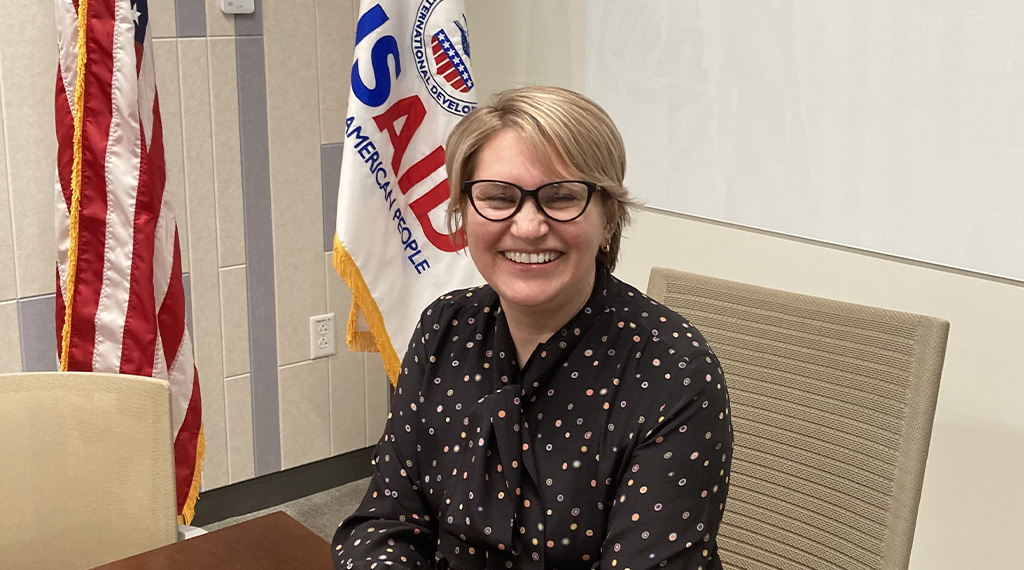
Over the course of three decades, USAID has distributed funds in more than 40 countries. It spent US $130 million in 2022 to strengthen independent media. Olesia Gardner, USAID’s Civil Society and Media Advisor discusses challenges and partnerships, and highlights success stories, emphasising the need for dedication and local engagement in media development, as well as the vital role of media pluralism in upholding democratic values.
Why is it important for USAID to support the media?
Gardner: Media pluralism serves as a crucial tool for maintaining a robust media landscape and upholding democratic values. For over three decades, USAID has helped to fuel the growth of an independent media ecosystem across Europe and Eurasia. However, today the sector is facing unprecedented challenges to both a free press and to broader democratic progress: financial insecurity, technological change, eroding public trust, and threats from powerful political and business interests.
USAID support strengthens the competitiveness, credibility, capacity, and innovation of content creators, and equips journalists and media outlets, including investigative journalists, with the tools they need to confront these challenges. USAID programmes also foster demand for high-quality news and information and improve critical thinking skills among news consumers.
What kind of news organisations are eligible for support? In which countries does USAID fund media?
Gardner: USAID has been one of the world’s leading supporters of independent media for over three decades in over 40 countries. In the 2022 financial year alone, USAID spent approximately US$130 million to support media and the free flow of information. USAID’s comprehensive approach to supporting media systems globally focuses on supporting both the supply side, so content producers and distributors, and the demand side, audiences and the legal enabling environment.
Our programmes help support journalists to develop and grow their audiences, establish more sustainable sources of revenue, leverage digital tools and technology to broaden their audiences and strengthen engagement with them, and protect themselves from increasing digital, legal, psycho-social, and physical threats to their lives and livelihoods. USAID’s support seeks to strengthen journalistic professionalism, establish media management skills, and promote free and independent media. Among our partners are news publishers, investigative journalists, and media organisations.
Do you implement the programmes yourself, or do you involve other organisations? What is the advantage of your approach?
Gardner: At USAID, we achieve our mission by partnering with individuals and organisations around the world. Working together, we find innovative and cost-effective solutions to pressing global challenges. We have been experimenting and encouraging partnerships as these bring together various expertise, personalities, and resources to achieve the most impact. For example, the Central Europe Media programme is a partnership between Zinc Network and IREX. The Media Trends conference in Budapest [in December 2023] was a success due to partnership with the Center for Sustainable Media. In Bulgaria, we have organised two workshops for journalists in partnership with the Association of European Journalists (AEJ).
Thinking of media support programmes in Europe, what are the biggest challenges you have to face?
Gardner: The economic sustainability of media outlets continues to be a major challenge. The question arises how traditional and emerging media can maintain relevance and financial viability in this ever-evolving landscape where entertainment and information consumption patterns are rapidly changing. We operate in an environment where holding the powerful to account is increasingly difficult, and where state actors routinely interfere with the advertising market, starving independent media to favour those willing to toe the government line.
Through our media support programmes we aim to create space and opportunities for news organisations to access different experiences, tools and thinking. In Central Europe, for example, we conducted an audience research, which was presented broadly to independent media in five countries. The feedback we received showed that the research helped better understand the audiences and also the importance of data-driven technologies in reaching outside the audience bubble. The overwhelming response to the research also showed a big appetite among the journalism community to introduce surveys in their work.
What was the biggest success story among your projects?
Gardner: USAID has lots of success stories to share, but I will focus on the ones achieved by the Balkan Media Assistance programme (BMAP). USAID launched the first iteration of BMAP in September 2017 with the objective of enhancing the professionalism and sustainability of media in the Balkan region by working with renowned and promising news media outlets to improve their digital content quality, business processes, and collaboration. The success of BMAP, which closed in July 2022, led to the launch of a second iteration of the programme, entitled Balkan Media Assistance Programme to Foster Organisation Readiness While Advancing Resilient Development (BMAP Forward), which unfolded in February 2022.
BMAP was designed and implemented by 10 media outlets spanning Bosnia and Herzegovina, Kosovo, Montenegro, North Macedonia, and Serbia. The successes of the BMAP programmes have been multi-faceted and far-reaching. All of its key partners have seen marked increases in their programmatic advertising revenue, significantly boosting their financial sustainability. For example, Bosnia-based media outlet Oslobođenje saw an increase in monthly programmatic advertising revenue of 206 percent, going from $2,770 at the start of the programme to $5,680 by the end of the programme. Meanwhile, Vijesti, an outlet based in Montenegro, increased its advertising revenue by 1,300 percent going from US$1,100 in revenue per month to US$10,200. Media partners participating in BMAP also emerged with a more robust network and stronger relations with other media outlets.
Do you have any special advice for organisations that have not funded journalism yet, but are thinking about doing so?
Gardner: Media development is a fascinating area, but it also requires dedication, patience and financial commitment. Sound analysis of the media and its environment in a country is needed before planning a new media development intervention to map the media outlets and the operational environment, donors and what type of assistance they provide, to identify the gaps in technical assistance and funding.
Our experience has proven that local consultants are in most demand […] as they already understand the local context, speak the language, and most importantly because of trust. Finally, the media development programmes tend to be the most successful when guided by the principles of locally-led development where partners are involved in defining their own vision for success; whereas the donors remain flexible and attentive to the needs for the partners.

Miguel Castro, head of Global Media Partnerships at the Bill & Melinda Gates Foundation, shares his thoughts about partnering with large, mainstream media organisations, what the foundation looks for in their partners, the biggest challenges when working with such outlets, and how they measure the success of their projects.
The Gates Foundation is one of the largest spenders on media partnerships among philanthropies. Why is this field so important for the Foundation?
Castro: I’m not really sure whether the foundation is among the largest philanthropic investors in media anymore, the data is always very difficult to crack. We are definitely a large funder, no question about it, but in the last few years there has been an increased investment by philanthropic organisations that have not been traditionally investing in the media space, and there is very little tracking about all of that. But we do have a significant portfolio.
Ever since 2011, when the Foundation decided to centralise its work with media organisations through grantmaking in this unit called the Global Media Partnerships, there have been a couple of elements that substantiate this strategy. One of them has to do with helping media organisations who care about global health, development, and gender equality.
We feel that, in a sense, there has been a market failure of really high quality journalism on these issues. It is assumed that it does not bring in large audiences, although these assumptions have been challenged over the years, and we felt, and we still feel that the overall share of journalism that touches the social issues that are important for underserved populations is very small. So we have always wanted to address that market failure, by subsidising good quality journalism with organisations that share the same values and objectives.
While many donors focus on supporting outlets in financial need, the Gates Foundation forged partnerships also with mainstream media organisations, such as The Guardian, Der Spiegel, El Pais, Financial Times, or Al Jazeera, among others. What is the idea behind these partnerships?
Castro: Whether the organisations we work with are for profit, or not for profit – that’s not the key question. The media organisations we work with should be mission driven. Their mission cannot only be financial return. Of course, that is a legitimate quest by any media organisation, and we want them to succeed and be sustainable, but it is not our priority.
We work with organisations that are driven by a mission that has to do with the role that we believe journalism plays in societies in being a service to society by informing its citizens. How is this impacting the development of communities across the world? That’s what matters to us. And we work with the most effective partners that we find, and often they are commercial organisations that have larger audiences. They’re more sophisticated in their approaches, have a greater understanding of engagement strategies, care about impact in the same way as we do. We have done a significant amount of partnerships with mission driven commercial organisations and in many cases, the very first relationship that they ever had with philanthropy organisations was with us.
Philanthropy is not the solution for the sustainability problems of media organisations. The media sector continues to struggle financially. We, philanthropies, at our best are at the forefront of the quests for social justice, even if it is just defining conversations, informing political debates. It doesn’t matter too much what type of organisation it is, for profit, or not for profit, if there is a mission alignment on what the role of journalism is.
What is the scope of these grants for mainstream media: do they focus on certain projects, reporting about certain topics, skill-building, maybe organisational development?
Castro: We call these relationships partnerships for a reason. They are never one thing only. There is this debate about core funding versus project based support, but I think it’s never one thing or the other. You can do core support and be project led, by providing a great deal of support for the necessary infrastructure. It is more about the design of the grants and how the funding is utilized.
So even though we do have grants and relationships that focus on sustainable development goals, or global health security, or gender equality, within that, there is always support for organizational development, there is always capacity building. Many grants pay for improving the capacity of an organization to understand their impact and their engagement and their audience, sometimes even developing products. On a few occasions we have actually provided catalytic start-up funding for the creation of an organisation.
It is always a result of smart design, and it is an important factor that we have long term commitments to our partners. Since 2018. all our grants are for three years or longer. In three years, even if it is project based funding, there is a lot of organizational development that happens.
What was the biggest success story among these partnerships with mainstream media, and in general, how do you deem a project successful?
Castro: There are a lot of success stories, I could go in many directions. In terms of impact, we have a pretty high ratio of satisfaction and success, because we invest a lot of time in due diligence at the beginning of the conversation to get to know our partners and for our partners to get to know us. Then the grantees have the capacity to do what they do best: journalism.
We track impact jointly with our grantees. We have done a lot of work with a lot of people and a lot of grantees, and have piloted a lot of things to get to a pretty solid framework to understand the performance of our partners and for the partners to understand how their journalism is achieving what they want to or not. Among other tools, we work with the American Press Institute, which has a tool called Metrics for News, which we subsidise for grantees for their media analytics.
We have regular conversations about how their journalism is doing, and its impact. And we learn from them how it is impacting their editorial approaches. I think impact should be an important question for every journalism organisation: understanding how your audiences consume your content, what they do with the knowledge that they acquire seems to me quite a fundamental question. So we have helped media organisations to do that in the most sophisticated way possible for quite a long time. And at the same time, it helped us to understand if we were using our resources in the most effective way.
If you had to mention one project as a flagship one, what would it be?
Castro: I was very happy with an unusual cooperation. In 2019, The Guardian, Spiegel, El Pais and Le Monde got together for a year-long series to examine the lives of refugees arriving to Western Europe. Migration was a really hard topic, and they came together with a project that included longform, multimedia, in-depth, amazing journalism from all four of them called The New Arrivals.
They shared resources, ideas, each of them produced a different output to their audiences in their own language. That was amazing to see. We facilitated it by providing funding, because at that time there was a lot of very domestically focused, highly political coverage and very little storytelling about what is happening to the individuals.
It was amazing for two reasons: for the quality of the journalism, for the storytelling, but also because these organizations demonstrated that they could work together. I think there should be a lot more like this, and it’s a shame that it’s 2024 and we do not see tens of projects like that.
What was the biggest challenge you encountered when working with these large organizations?
Castro: These organizations never had philanthropies on their radar. In Western Europe, and in the US. philanthropies are highly regulated. You are accountable to a strong regulatory environment for your tax status, etc. You develop these partnerships with editorial teams. But then it comes to a point when someone should develop a proposal, and it stops being an editorial question. Someone in the building has to do that, to develop the administrative and accounting infrastructure. It is a struggle for media organizations because they are not used to it. So the first grant is always very hard. It is a bit of a cultural shift.
Also, if you are a journalist, you want to be fully, absolutely independent. There is always a healthy skepticism about funders. But as these partnerships evolve, you build trust, and then it becomes a normal and actually enriching relationship for everyone involved.
Do you have any advice for other funders?
Castro: One of the reasons why Journalism Funders Forum exists is to help foundations that are interested in working with journalism to do it in the most effective way. It can be incredibly effective. Stories are a commodity for both journalism and social organisations. Trust is a common currency. We want audiences and everyone to trust what we do, and we want to earn that trust by doing the right thing.
There are rules of the game, there are approaches that work, and approaches that work less. Journalism organizations that are new to philanthropy have to make an effort to understand what is at stake. And at the same time, philanthropic organisations that have been doing funding in other spaces for decades need to understand what is unique and what is different, and what are the rules of the game when working with media organizations. Ours are creative and editorial independence, the integrity of the journalism produced, and transparency from all parts involved.
And when that happens, it is beautiful. When journalism and philanthropies or civil society organisations with advocacy mandates come together, respecting the rules of the game of advocacy and philanthropy and policy and journalism, this is when everyone is most impactful and ultimately societies will benefit. So it is an invitation to organisations and the philanthropy space to consider journalism funding in the most mature and sophisticated way possible.
